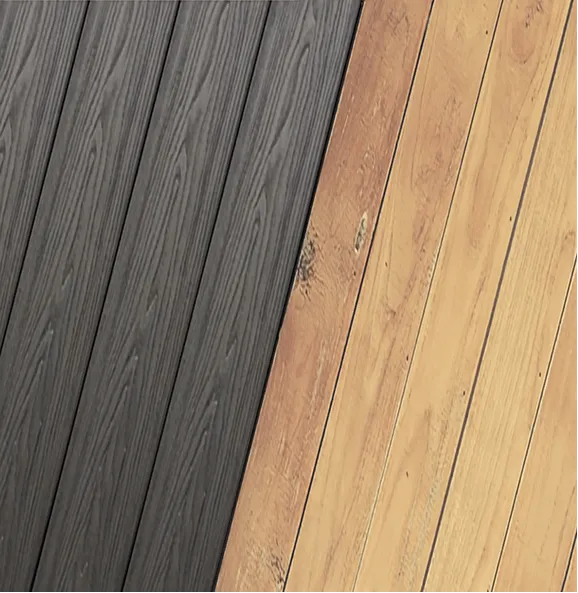WPC DECKING VS WOOD DECKING

Wood Plastic Composite Decking
WPC (Wood Plastic Composite) Decking is a composite flooring material made from a blend of wood fibers and plastic. It has excellent wear resistance and durability, not easily damaged or deformed. It has good waterproof performance, suitable for humid environments. Using recycled materials helps reduce the demand for native wood resources. It simulates wood grain and texture, providing a natural wood aesthetic.
Wood Decking
Wood Decking is a traditional and classic flooring option made from natural wood with a traditional and timeless aesthetic that is suitable for a variety of decorative styles.
Appearances:
Wood Decking is favored for the unique texture of wood, and with technological advances, Wood Plastic Composite Decking can also display natural grain patterns like natural wood. In addition, Wood Plastic Composite Decking can be made with subtle stripes and varied wood grain patterns to fulfill the varying preferences of consumers.
Service Life:
Wood Decking is vulnerable to weather elements such as sunlight, rain, and moisture, which can result in issues like rotting, warping, or cracking, ultimately affecting its longevity. On the contrary, WPC Decking exhibits excellent weather resistance and can endure diverse climatic conditions while maintaining stability and durability.
Cost:
Wood Decking is prone to weather-related damage such as rotting, warping, or cracking due to exposure to sunlight, rain, and humidity. Regular maintenance for wood flooring, including waxing, painting, and waterproofing, is essential, resulting in higher upkeep costs. On average, the annual maintenance cost can range from 400 to 800 USD. In contrast, WPC Decking requires minimal maintenance due to its inherent characteristics, resulting in a significantly lower annual maintenance cost of only $50 to $100.
Safety:
Wood Decking is inclined to become slippery and prone to damage in wet conditions. In contrast, WPC Decking boasts excellent anti-slip properties that lessen the risk of slips and falls, particularly in wet environments. The surface is durable and resistant to abrasion, mitigating the likelihood of injuries from sharp edges and surface harm. Crafted from eco-friendly materials, free of harmful substances, safe, and non-toxic。
